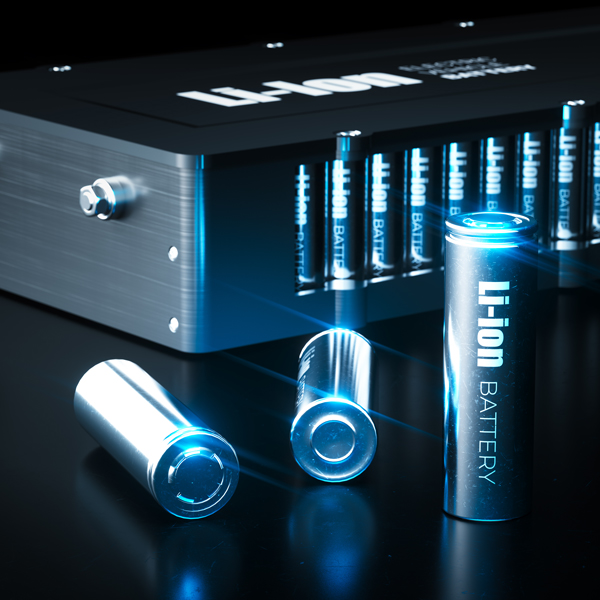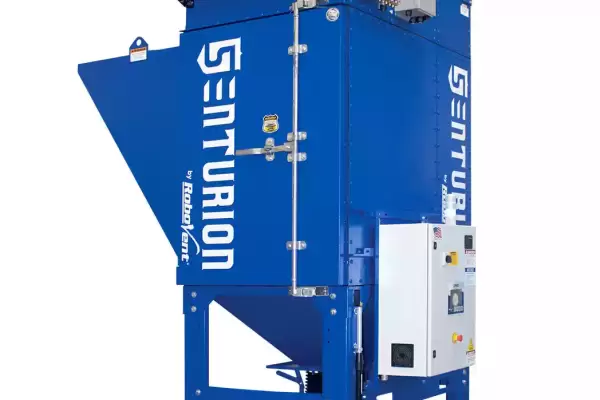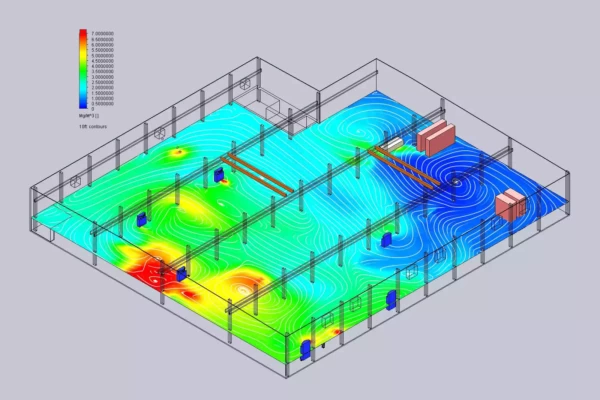DUST TYPES IN LITHIUM-ION BATTERY PRODUCTION
Lithium-ion battery production can generate dust during various stages of the manufacturing process, including electrode preparation, mixing, and coating. Different types of dust are produced during different aspects of Li-ion battery production; most dust is produced during electrode production and cell assembly. Nanomaterials are increasingly used in Li-ion battery production to improve battery performance, which can create special challenges for battery dust control.
- Cathode materials: The cathode is one of the two electrodes in a lithium-ion battery. It is typically made of a metal oxide material such as lithium cobalt oxide (LCO), lithium manganese oxide (LMO), or lithium nickel cobalt aluminum oxide (NCA). These materials are chosen for their high energy density and stability.
- Anode materials: The anode is the other electrode in a lithium-ion battery and is typically made of graphite or silicon. Graphite is the most commonly used anode material, as it is stable and has high electrical conductivity.
 EXPOSURE RISKS FOR LITHIUM-ION BATTERY DUST
EXPOSURE RISKS FOR LITHIUM-ION BATTERY DUST
Many of the materials used in Li-ion battery manufacturing are hazardous or toxic if inhaled or ingested; some may also present risks through skin contact. The use of nanomaterials for battery production may increase exposure risks, as nano-size materials often cross from the lungs into the bloodstream and may be able to penetrate the blood-brain barrier. Specific risks for materials used in Li-ion battery manufacturing include:
- Metal and metal oxide nanoparticles: Metal oxide nanoparticles such as lithium cobalt oxide, lithium cobalt nickel oxide, lithium iron phosphate, and lithium manganese oxide are commonly used as cathode materials in lithium-ion batteries. Lithium-based dusts can be hazardous if inhaled or ingested; inhalation risks may include respiratory and other health effects, including lung inflammation, fibrosis, and cancer.
- Carbon materials: Inhalation of carbon dust and nanomaterials (including graphite used in anode production) can cause respiratory irritation, as well as lung damage and fibrosis with long-term exposure. Carbon nanotubes and nanofibers, for example, may be associated with lung diseases like fibrosis or mesothelioma; their long, thin shape may mimic the behavior of asbestos fibers in the lung.
- Electrolyte solvents: The electrolytes used in lithium-ion batteries typically contain a lithium salt (such as lithium hexafluorophosphate) dissolved in an organic solvent. Exposure to these solvents can cause respiratory and neurological effects, including headache, dizziness, and nausea.
COMBUSTION RISKS IN LI-ION BATTERY MANUFACTURING
Some materials used in li-ion battery manufacturing create a significant risk of a combustible dust explosion, including lithium, nickel, cobalt and silicon powder.
- Lithium is an alkali metal that is known to be highly flammable and combustible; it can catch fire at relatively low ignition temperatures. It also reacts violently or explosively with water. Other metals and alloys used in Li-ion battery production are also combustible in powdered form, including magnesium, nickel, aluminum and cobalt.
- Lithium oxides produced during battery production, such as lithium cobalt oxide (LCO), lithium manganese oxide (LMO), and lithium nickel cobalt aluminum oxide (NCA), are not themselves combustible. However, when these materials are in a finely divided form, such as in the form of dust or particles, they can be a potential fire and explosion hazard, particularly if subjected to high temperatures or electrical current.
- Carbon nanomaterials such as carbon nanotubes and graphene can have high surface areas and high reactivity, making them highly prone to combustion. Carbon dust can ignite and burn easily, especially when in finely divided form. Carbon-based nanomaterials, such as carbon nanotubes, can also pose an additional risk, as they can generate static electricity, which can cause explosions in certain conditions.
- Silicon powder may be highly reactive when finely divided and creates a significant dust explosion hazard. It may also react violently or explosively with water.
Employers working with potentially combustible materials should conduct a Dust Hazard Analysis (DHA) in compliance with the National Fire Prevention Association (NFPA) Standard 652: Standard on the Fundamentals of Combustible Dust. (Note: this standard and other combustible dust standards will be combined as NFPA 660 in 2024.) A DHA will give manufacturers a better understanding of the explosibility of their material and specific hazards related to their processes.
Learn more about mitigating combustion risks for battery dusts in the Visual Guide to Combustible Dust Collection.
 REGULATIONS FOR LITHIUM-ION BATTERY MANUFACTURING
REGULATIONS FOR LITHIUM-ION BATTERY MANUFACTURING
In the U.S., the Occupational Health and Safety Administration (OSHA) sets Permissible Exposure Limits (PELs) for respirable materials used in production. These exposure limits have the force of law, and employers are required to ensure that employees are not exposed to materials at levels above the PEL. Manufacturers can find the PEL specific to the materials they are working with in OSHA's Annotated PEL Tables. Recommended Exposure Limits (RELs) from the National Institute of Occupational Safety and Health (NIOSH) and Threshold Value Limits (TLVs) fromhe American Conference of Governmental Industrial Hygienists (ACGIH) may be lower than the OSHA-required PEL. Nanomaterials are not currently regulated separately from other forms of their materials.
- Lithium and lithium compounds: OSHA has not set specific PELs for lithium, lithium cobalt oxide (LCO), lithium manganese oxide (LMO), and lithium nickel cobalt aluminum oxide (NCA). The only lithium compound currently regulated is lithium hydride, which is not typically used in Li-ion battery production. However, that does not mean that lithium products used in battery production do not pose an inhalation risk.
- Magnesium oxide fume: 15 mg/m³ (total particulate)
- Cobalt metal dust and fume: 0.1 mg/m³
- Nickel: 1 mg/m³
- Silicon: 15 mg/m³ (total dust), 5 mg/m³ (respirable fraction)
- Graphite: 15 mppcf (respirable fraction)
Manufacturers working with potentially combustible lithium-ion battery dust must also comply with all regulations related to combustible dust. Combustible dusts are regulated under OSHA's General Duty Clause (Section 5(a)(1)) with additional requirements under the Hazardous Locations (§1910.307), Hazard Communication (§1910.1200) and Housekeeping (§1910.22) standards. OSHA's Combustible Dust National Emphasis Program (NEP) outlines policies and procedures for inspecting workplaces that create or handle combustible dusts. In addition, manufacturers dealing with combustible dusts must follow NFPA standards for handling combustible materials, including NFPA 652, NFPA 654, NFPA 484, NFPA 68, and NFPA 69.
Hazardous materials used in li-ion battery production may also be subject to Environmental Protection Agency (EPA) rules for emission control and material storage and disposal under the Clean Air Act, Clean Water Act, and Reso4urce Conservation and Recovery Act (RCRA).
MORE DUST TYPES
SOLUTIONS FOR LITHIUM-ION DUST COLLECTION
RoboVent can help you design a dust control solution for lithium-ion battery dust that will keep employees safe, prevent contamination of industrial processes with fugitive dust, reduce combustion risks and maintain compliance with all regulations.
Engineering controls such as dust collection and air filtration must be used as a primary control measure when working with hazardous materials used in Li-ion manufacturing. RoboVent Senturion is a powerful, flexible dust collector that can be adapted to a wide range of applications, including the collection of dust produced in battery manufacturing. RoboVent engineers can develop a customized solution for Li-ion dust control, including:
- Hood, ductwork and system design to maximize capture rates and minimize disturbance of usable materials or sensitive manufacturing atmospheres
- Ventmapping Engineering services
- Filter selection, including HEPA filtration for ultrafine particulate and nanomaterials
- Indoor air quality and exposure testing
- Regulatory compliance
Lithium-ion Battery Dust Collection Collectors
Clean Air Technology Services
CONTACT US
Contact one of our industrial dust experts to gain the advantage against dust-generating processes and applications.








